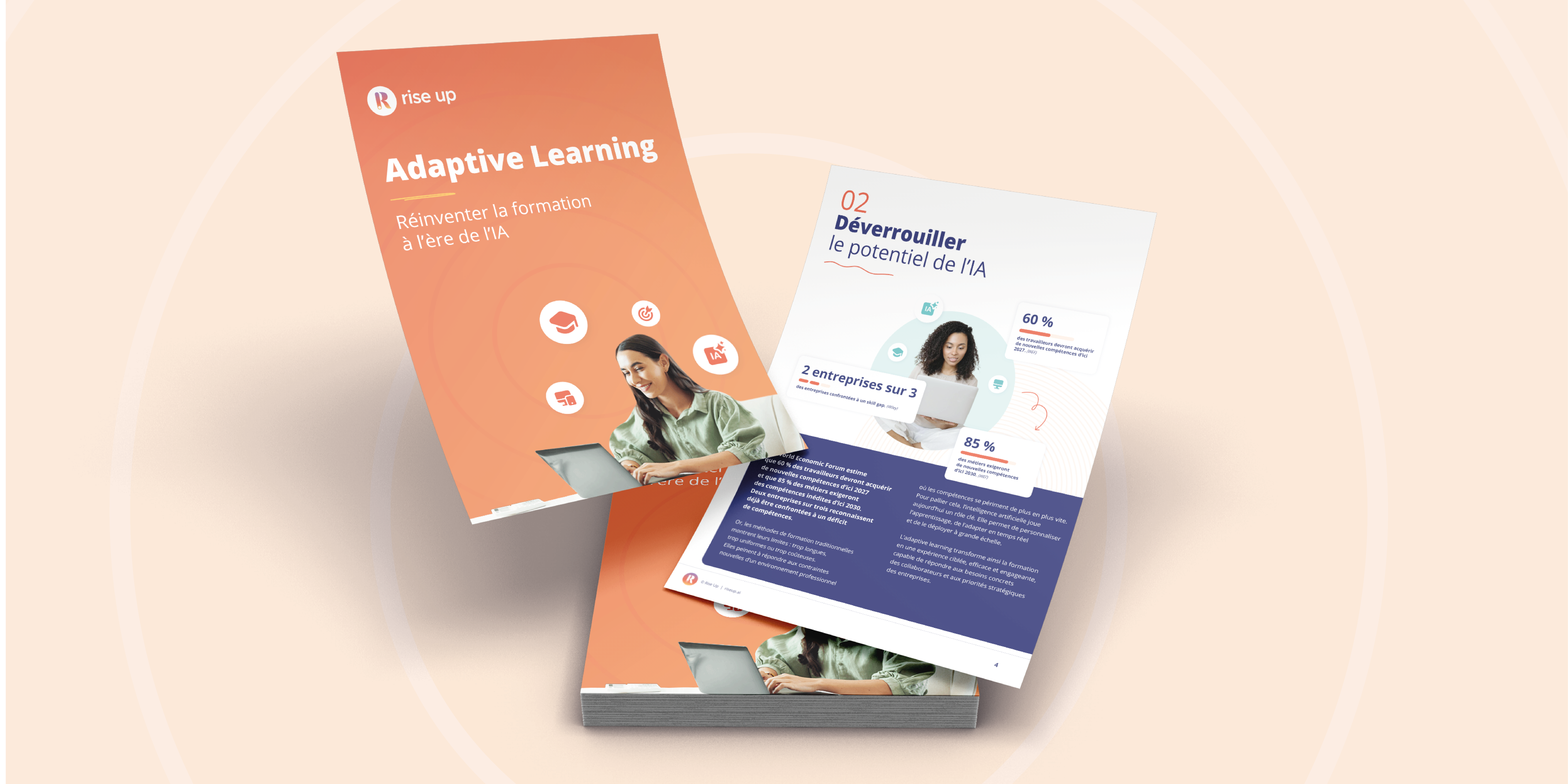Learning culture: employee engagement and the employee experience
6 minutes of reading | 2022-02-28

This is the third article in our series on learning culture. This article talks about the importance of employee engagement and a positive employee experience and how they relate to a strong learning culture.
To see the previous two posts, visit: Building a learning culture – an interview with DR Nigel Paine and What is a learning culture?
It’s great that so many L&Ders and business leaders are talking about learning culture but there’s another group of people that need to be on board with it as well: employees. A learning culture is only possible when employees are fully engaged with learning and fully engaged with their roles. They want to learn because they want to get better at what they do and help the company be better at what it does.
It’s not just employee engagement L&D and business leaders are talking about though - employee experience is an increasingly hot topic, particularly in L&D circles.
What do these two terms mean? There isn’t really a single universal definition of employee engagement or employee experience, but here are a couple of definitions that we think encapsulate what they both mean:
Employee engagement
"Employee engagement is a workplace approach resulting in the right conditions for all members of an organisation to give of their best each day, committed to their organisation’s goals and values, motivated to contribute to organisational success, with an enhanced sense of their own wellbeing."
Employee experience
"Employee experience is the result of all the interactions an employee has with their employer. It’s a specialised field closely related to employee engagement which focuses on creating a great working environment for organisations to get the most out of their people. This, in turn, is likely to drive productivity, improve products and services, innovate, aid retention, and create a great employer brand to attract new talent." (Chartered Institute of Personnel and Development)
The term employee experience is the less well known of the two concepts. It came into being a few years ago, with Brian Chesky, Airbnb’s CEO, being an early adopter. In 2016, the rental and hospitality company created a slogan called ‘Belong Anywhere’, a slogan that applied just as much to employees as to customers. And instead of having an HR department, Airbnb created an Employee Experience function.
In a sense, employee experience, as a concept, was born out of customer experience. We all get the concept of customer experience – give customers a great experience (product, service, environment, price etc) and they keep coming back and will recommend you to others. It’s the same with employee experience. Give employees a great experience (job role, learning opportunities, managers, environment, pay etc) and they are more likely to stay with you and recommend you as an employer.
Research by the American analytics and advisory company Gallup found that engagement levels influence the quality of potential job candidates, with 71% of employees finding out about job opportunities through referrals from an organisation’s existing employees.
In our previous post in this series, we talked to Dr Nigel Paine, learning expert and author of the book Workplace Learning: How to Build a Culture of Continuous Employee Development. Although Paine doesn’t refer to the term employee experience, he does talk about the importance of a strong learning culture and four elements that need to be in place: empowerment, trust, engagement and leadership. These four elements also drive a positive employee experience.
It’s pretty much impossible to separate employee engagement from employee experience as they are fundamentally linked. Or as Emma Bridger puts it:
“A great experience leads to higher engagement.”
Bridger is an expert in this area, being the managing director at the employee engagement consultancy People Lab and author of the book Employee Engagement: A Practical Introduction.

This all sounds quite straightforward but great experiences don’t come about by accident.
Organisations need to intentionally design and implement positive employee experiences
Are they doing it? Largely not, if engagement figures are anything to go by. Gallup is the go to company for global engagement stats and its surveys show that engagement is a global issue. The company has been recording employee engagement levels since 2000 and in 2020, the company reported two new records. In early May, employee engagement in the US shot up to a new high of 38%, up from 34% in the 2018 survey. At the time, 13% of the US workforce were actively disengaged, meaning that 13% of the workforce were unhappy and spreading their unhappiness around.
Just one month later, things were on the slide, with Gallup recording the biggest fall in engagement levels since it had started tracking the numbers. The new figures found that US engagement levels had fallen to 31%, with a 1% increase in the number of disengaged workers.
“There has never been a more pressing time to focus on this stuff,” says Bridger. “People are a lot more tuned in to what they want from their work life and they want somewhere where they can grow and develop. Learning and development is a key part of the experience that you have at work.”
People Lab has put a lot of research into the relationship between the employee experience and employee engagement, gathering what Bridger calls “people’s best experience stories”. After collecting thousands of these stories, Bridger says it was apparent that personal growth is absolutely critical, both to the employee experience and engagement. “It’s a theme that comes out in everybody’s best experience story,” says Bridger. “So there’s a really interesting opportunity here to broaden the L&D approach.”
Research by the professional services organisation Deloitte tells a similar story. One of the company’s Deloitte Insights articles, Becoming irresistible: A new model for employee engagement, claims five elements drive engagement, with one of them being growth opportunity (the other four are meaningful work, hands-on management, positive work environment and trust in leadership). Growth opportunity, according to the report, means training and support on the job, facilitated talent mobility, self-directed dynamic learning and high-impact learning culture.
There is no one size fits all approach to learning any more
To drive engagement and ensure a positive employee experience, L&D needs to design learning experiences that really get to the heart of what employees need to learn and how they want to learn it. For one employee, it might mean a traditional learning programme leading to a formal qualification. For another, it could be a mentoring programme.
For another, some bite-sized chunks of online learning to boost their technical capabilities. Most likely, it means a blend of different deliveries, according to the individual context and the organisational need. There is no one size fits all approach to learning any more. It’s all about blended learning now.
As Bridger says, it’s important that employers realise just how much employees care about learning opportunities. According to a LinkedIn report, employees value career development more than they ever have done before, with 94% saying they would stay at a company longer if it invested in their career development.
Conclusion
Having an engaged workforce, one that reports a positive employee experience, isn’t just good for employees of course. It’s also good for employers, leading to higher levels of productivity and performance, innovation, recruitment and retention, improved employer brand and so on. It also leads to a better customer experience. Really, it’s win win all round.
The next post in this series on learning culture will look at skills – skills shortages and the importance of upskilling and reskilling.





